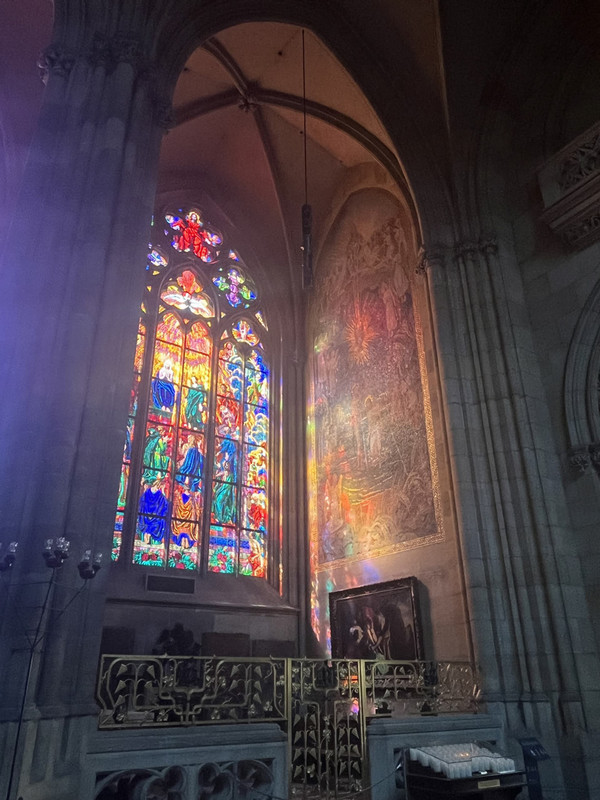Week 7
At the end of my seventh week at CEELI, I realized how little time I have left. I’m always trying to make the most of my time here and look forward to continuing to explore this beautiful country and region. The next three weeks will likely fly by as quickly as the previous seven have.
At work, I’ve been immersed in a project that holds significant potential, though it remains under wraps for now. While it’s challenging to contain my enthusiasm and not share the exciting developments, I understand the importance of this discretion. I also wrapped up my research on the use of electronic evidence in Africa and will hopefully share my findings with my colleagues at the end of week eight.
For now, let me share some history about the Czech Republic and Prague. While I didn’t do anything for the Fourth of July, I had July 5 off for Cyril and Methodius Day, a Czech national holiday. These two Catholic saints are considered the founders of Slavic literature. My friend Laura, whom I visited in Geneva the previous weekend, arrived that day, and we began by visiting the Old Town.
The Old Town is the oldest district in Prague, originating with a marketplace in the 9th century. It once was surrounded by a moat that turned the area into an island, but was later covered by streets as the city expanded. Today, the area is mostly populated by hotels, Airbnbs, restaurants, and shops, so few locals remain. The Czech government has long encouraged and invested in tourism growth, causing tension among locals who are pushed out of Old Town and avoid the area because of traffic. It’s unlikely that this will change, as Prague attracts around 8 million people annually, with the tourism industry contributing significantly to the city’s income. Tourists from Germany, the United States, the United Kingdom, Slovakia, and Poland are the top visitors. In 2023, the start of direct flights from Taipei and Seoul also significantly boosted tourism from Asia.
The next day, we got up early and walked across the Charles Bridge, which stretches across the Vltava River and connects Prague Castle and the Old Town. Prague Castle is a complex of various buildings and has served as the seat of power for the country’s kings, emperors, and presidents. After walking through the first courtyard, we saw the ruins of the Church of the Virgin Mary, the first building built in the area in 870.
Within the complex, we entered St. Vitus Cathedral, St. George Basilica, and Golden Lane. Golden Lane is a row of small, colorful houses that once housed the castle guards and skilled laborers for the castle. Notably, the Czech author Franz Kafka stayed in his sister’s residence on the street for about a year.

Of course, we had to get trdelnik with ice cream, strawberries, and chocolate. Although it has become a symbol of Prague, locals are quick to say it actually originates from Hungary. We then sunbathed and read in the park before enjoying a great Czech dinner at a local restaurant. For dessert, I had my first taste of fruit dumplings, a Czech dish originating in the 17th century.

On the last day, we went to the Astronomical Clock in Old Town. On the hour, a skeleton representing death strikes a bell as the Twelve Apostles rotate into the windows. The most impressive part of the clock is that it was installed in 1410, making it much older than it looks. We also went to a bakery specializing in kolaches, another authentic Czech dessert.

Lastly, we went on a tour of the Astronomical Tower and Baroque Library in the Klementinum. The Baroque Library is one of the most beautiful in the world, though visitors are restricted to a small area and cannot freely walk around. The tower provided a stunning view of the whole city. The iconic red terracotta rooftops created a picturesque view against the blue sky. I was sad to see Laura go but glad we could visit each other this summer. We’ll be back for the start of the Fall semester soon enough!

